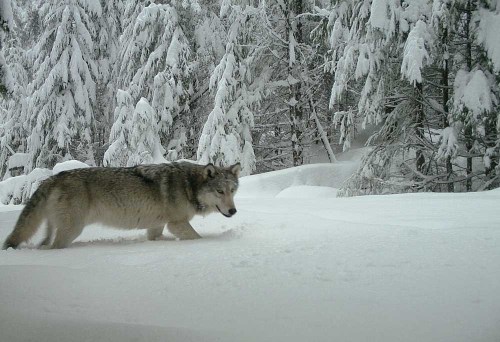ODFW supports federal wolf delisting
Published 4:30 pm Monday, May 13, 2019

- The Oregon Department of Fish and Wildlife has written a letter is support of removing wolves from the federal Endangered Species List. Wolves are already delisted in Eastern Oregon, but remain federally endangered west of highways 395, 78 and 95.
SALEM — Oregon wildlife officials are backing a proposal by the U.S. Fish and Wildlife Service to lift endangered species protections for gray wolves in the Lower 48 states.
Curt Melcher, director of the Oregon Department of Fish and Wildlife, submitted a letter to the USFWS on May 9 in support of federal delisting. While the Oregon wolf population continues to grow, ODFW is “currently situated to become the primary wildlife agency responsible for wolf conservation and management statewide,” Melcher wrote.
Trending
Wolves are already delisted in Eastern Oregon, but remain federally endangered west of highways 395, 78 and 95.
Since returning to Oregon in 1999, wolves are gradually but steadily expanding in numbers. According to the latest population estimate, ODFW counted at least 137 known wolves in 2018, a 10% increase over the previous year.
Most packs remain concentrated in northeast Oregon, though several groups are now documented in the Cascade Range — including the Rogue pack near Crater Lake, White River pack south of Mount Hood and Indigo group in the Umpqua National Forest.
“We fully expect this expansion to continue regardless of listing status as we have documented increasing numbers, packs and breeding pairs where they are not currently listed in the eastern third of Oregon,” Melcher wrote.
Environmental groups oppose delisting wolves, arguing the species exists today at just 1% of its former numbers and less than 10% of its former range. The USFWS has so far received 74,562 comments about its proposal.
In a previous interview, Jason Rylander, senior attorney at Defenders of Wildlife in Washington, D.C., said the Trump administration is failing to consider the entirety of wolf range, including the Pacific Northwest.
Trending
“They seem to have this idea that historic range of the wolf does not matter,” Rylander said.
ODFW manages wolves under the state’s Wolf Conservation and Management Plan, which Melcher said requires the agency to diligently monitor threats to wolves — such as poaching, diseases and habitat destruction.
“Based on empirical data and a viability analysis, these threats are not having a significant impact on the Oregon population,” he said.
The Oregon wolf plan also regulates when wolves can be killed after repeatedly preying on livestock. As it stands, wolves cannot be killed in Western Oregon except in defense of human life. But if the species is delisted, it would be subject to so-called “chronic depredation” guidelines.
Wolves in Western Oregon would fall under Phase I of the wolf plan, which Melcher said “provide protections similar to what would occur under the Oregon ESA.” Phase I defines chronic depredation as four confirmed attacks on livestock in six months, with strict rules for ranchers implementing non-lethal deterrents.
Eastern Oregon is now in Phase III of the Wolf Plan, which allows for ranchers to request killing wolves after just two confirmed attacks on livestock over any period of time.
ODFW is nearly finished with a long-overdue update of the Wolf Plan, which was supposed to be completed in 2015. If passed, the definition of chronic depredation in Phase III would change to two confirmed attacks on livestock in nine months.
A draft of the revised plan was released in April, and the Oregon Fish and Wildlife Commission is scheduled to vote at its meeting June 7 in Salem. The commission will also hold a conference call on May 17 in preparation for the June meeting.
Members of the public may listen in to the conference call at ODFW Headquarters in Salem, 4034 Fairview Industrial Drive. The call will also be live-streamed online at www.dfw.state.or.us/agency/commission/minutes.









